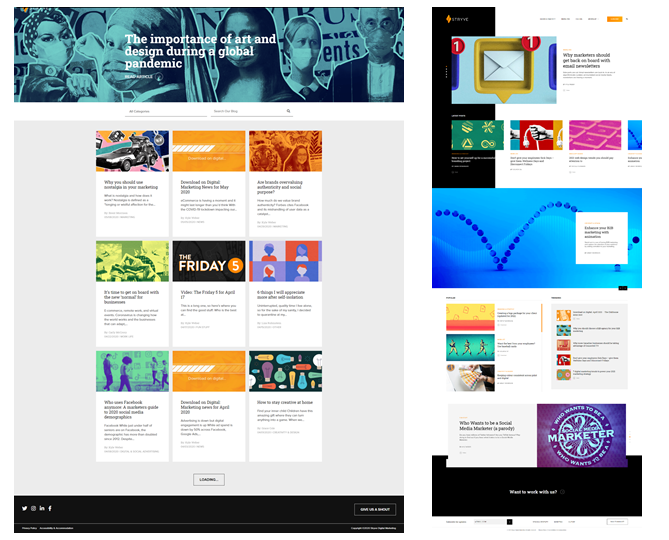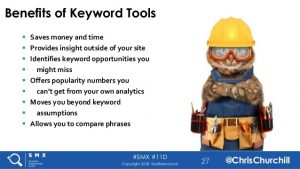Everyone knows content rules all. It helps you stand out, attract potential buyers, and drive leads and performance. In fact, it’s estimated there is an average of 7.5 million blog posts published every day.
How does your content stack up? Maybe you’ve got a nice company blog that keeps your social channels stocked with organic content. Maybe you’re more focused on filling your online portfolio with case studies. Maybe you’ve got some downloadable templates saved on your company intranet. Maybe you even have a Youtube channel.
You have all of this great content, but it’s probably floating around in a bunch of different places. It’s everywhere and nowhere at the same time. So how will prospective customers get a full picture of your capabilities and thought leadership? How can you ensure your target demographic is consuming your content in a way that provides value?
The solution: build yourself a content hub.
But wait… isn’t that just a fancy word for “blog”?
“We’ve been publishing articles on our blog for years now. That’s a content hub, right?”
Not exactly.
First of all, props to you for having a blog in the first place. Producing content is tough and if you’re already writing on a schedule, the hardest part is over. However, blog posts are only one piece of a much larger, all-encompassing content hub. Let me explain:

A standard blog typically consists of text-only posts, sorted into a long list of specific categories, published and shown in chronological order. This is great for company press releases and timely articles, but what about that beautiful piece of evergreen content from a year ago? By now, it’s probably buried. Unless you’re using specific and intuitive categories, readers will have to scroll forever to reach it and that’s no bueno.
A content hub is a centralized destination filled with curated, related content, presented in multiple different formats. The idea here is to present content in the way your consumers want and prefer to read it, both in terms of format and subject.
With a content hub, users can choose to sort by article, video, download, infographic, slide deck, podcast, white paper… the possibilities are endless! In addition to this, the topic categories typically have broader filtering options. For example, the Stryve content hub has 3 main areas of thought leadership: Design & Creativity, Marketing, and Culture. Content within these categories is then sorted further into sub-categories. Previously, we had a list of 20+ niche categories that readers had to navigate from the get-go. Unless they knew exactly what they were looking for, it was a tad overwhelming.
Lastly, you have far more control over your content hub compared to your chronological blog. You can choose which pieces to highlight on the front page and bring attention to older pieces by adding sections like “Most Popular” or “Trending Now.” Apart from this, every piece of content is connected through related and suggested pieces.

A side-by-side comparison of Stryve’s old blog and V1 of our content hub.
Putting your content hub to work
Become a thought leader
Communicating you are an expert in your field is especially important for B2B companies to gain the trust of their target audience(s). Your content hub helps demonstrate your experience and credibility with its broad range of content. Having a customizable hub allows you to easily showcase specific content pieces and by doing so, strategically position your company as a trusted thought leader.
Receive more traffic
Mastering the search game—which is the largest online source of traffic—begins with great content. To get that sweet SEO juice, your blog is a great place to start, but a content hub takes you to a whole other level. By connecting the home page of your content hub to its subpages and your main business website (via internal linking, related services, suggested posts, etc) you are building a web of interconnected pages. When search engines like Google see this, they see your site as having topical authority, giving you a higher ranking. This interconnectivity also allows your audience to easily get sucked into content rabbit holes, keeping them engaged and on-site longer.
Get more qualified leads
Now that you’re attracting more potential customers, let’s turn those casual browsers into leads. A content hub with a variety of different media formats makes it easy to build out a solid strategy with multiple touchpoints to guide users down your sales funnel. Link up those top-of-funnel articles to lower-funnel videos and gated downloads, then plug in lead capture forms and CTAs where users are most engaged.
Gather more insights
Having a well-built content hub allows you to collect valuable insights on your consumers. Are you getting hundreds of shares on a specific topic? It might be a good time to put out a follow-up piece. If you’ve noticed your users read an average of 3 blog posts before registering for a webinar, use that information to re-organize and prioritize your cornerstone content. If you connect all your posts as described, there should be no shortage of insights regarding how your audience consumes and engages with your content.

Digital & Social Articles on Business 2 Community
(37)







